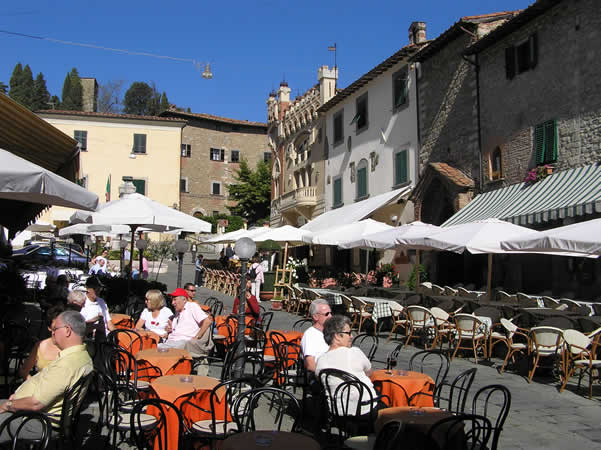Questo articolo è disponibile anche in:
![]() Français
Français ![]() Deutsch
Deutsch ![]() Español
Español ![]() Italiano
Italiano
Montecatini Alto is located on a hill, 290 meters above sea level, which dominates the entire Valdinievole plain with an extraordinary panorama. The inhabited center of Montecatini Terme is located just below the village and can be reached by car in ten minutes or on foot, following a hilly path called “La corta” and finally via an ancient funicular.
The funicular, built in 1898, is the oldest in the world still in operation and allows you to reach the town of Montecatini Alto through a breathtaking climb. The track has a length of 1,050 meters and overcomes a height difference of 202 meters which in the final, steeper section, reaches a gradient of 38.50%. The journey between the stations of Montecatini Terme and Montecatini Alto takes about 10 minutes.
Montecatini Alto is the old historic center of Montecatini, home to the ancient castle, which in the 14th century was surrounded by over a kilometer of walls, with 7 gates and 25 towers. Thanks to its highly strategic position, overlooking the Val di Nievole, the village of Montecatini Alto was at the center of fierce battles between Florence and Lucca for control of the area. In 1554, by order of Cosimo dei Medici, the castle of Montecatini Alto was destroyed. Already in this period, the thermal baths were developed downstream and a large part of the activity moved over the centuries to the new Montacatini Terme. But the village of Montecatini Alto remained the seat of the municipality until 1905.
A CHARACTERISTIC VILLAGE
Today the characteristic village extends in an arch between two hills, on one of which there is the Rocca di Castello Vecchio or di Tramontana, the Church of San Pietro and the bell tower. While on the other are the Castel Nuovo or Clock Tower and the Carmine Church.
Characteristic is the main square overlooked by the Palazzo del Podestà, the Palazzo di Giustizia (from the Middle Ages, but renovated in the 16th century), the Teatro dei Risorti in Liberty style and the Cappellina di Piazza (1403). The area around the square is above all full of artisan shops, cafés and characteristic restaurants. In the village there are also 7 medieval tower-houses dating back to the second half of the century. XII.
The two main churches of the town are located on the two hills that form Montecatini Alto. The Church of San Pietro, seat of the Propositura, is the most important, built between the 11th and 12th centuries and modified in the second half of the 18th century. The Chiesa del Carmine was originally built near the fortress of Castelnuovo at the end of the 13th century. Today it has a late-Baroque appearance following the restructuring of 1764. Inside it is possible to see in the painting of the Martyrdom of San Sebastiano the representation of what the ancient castle of Montecatini Alto was like in the 18th century.
THE FORTIFICATIONS
The remains of two fortifications belonging to the ancient defensive system of the castle are located on the top of the two hills of Montecatini. The westernmost fortification is the “Rocca del Castello Vecchio” or “Tramontana” which today is simply called the Rocca, it is located near the church of San Pietro. Today the escarpment walls of the pentagonal enclosure remain visible on which the keep tower is located at the top.
Of the second fortress, the “Rocca del Carmine” or “Castelnuovo”, only the imposing tower remains visible today which has housed a still functioning clock since the end of the eighteenth century. The walls of Montecatini Alto were largely destroyed in 1554 by the Florentine army. The only trace still visible is the Porta di Borgo, near this gate, the only one left today of the 7 gates that once opened on the walls, is the Church and Monastery of the Benedictines of S. Maria a Ripa (sec XV-XVI). The 12th century church is in Romanesque style. The single-nave interior has a stone altar, remains of frescoes on the vault of the presbytery, a compass with organ and the late seventeenth-century choir.
Questo articolo è disponibile anche in:
![]() Français
Français ![]() Deutsch
Deutsch ![]() Español
Español ![]() Italiano
Italiano



